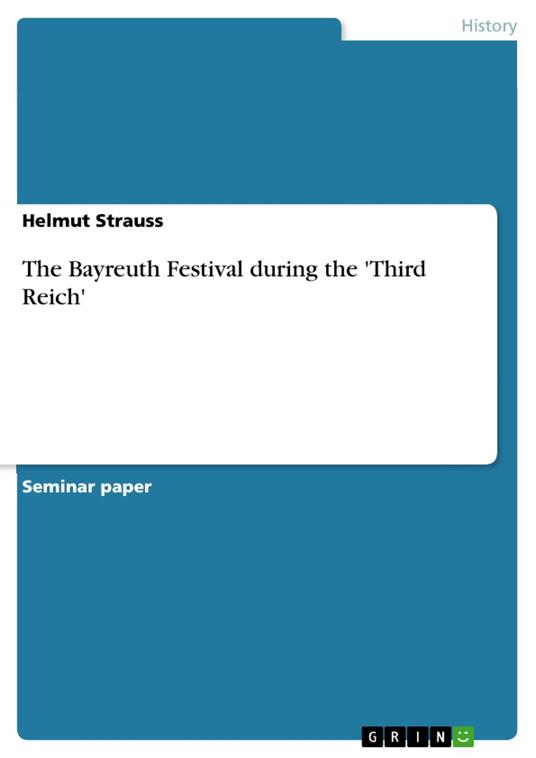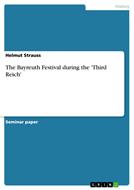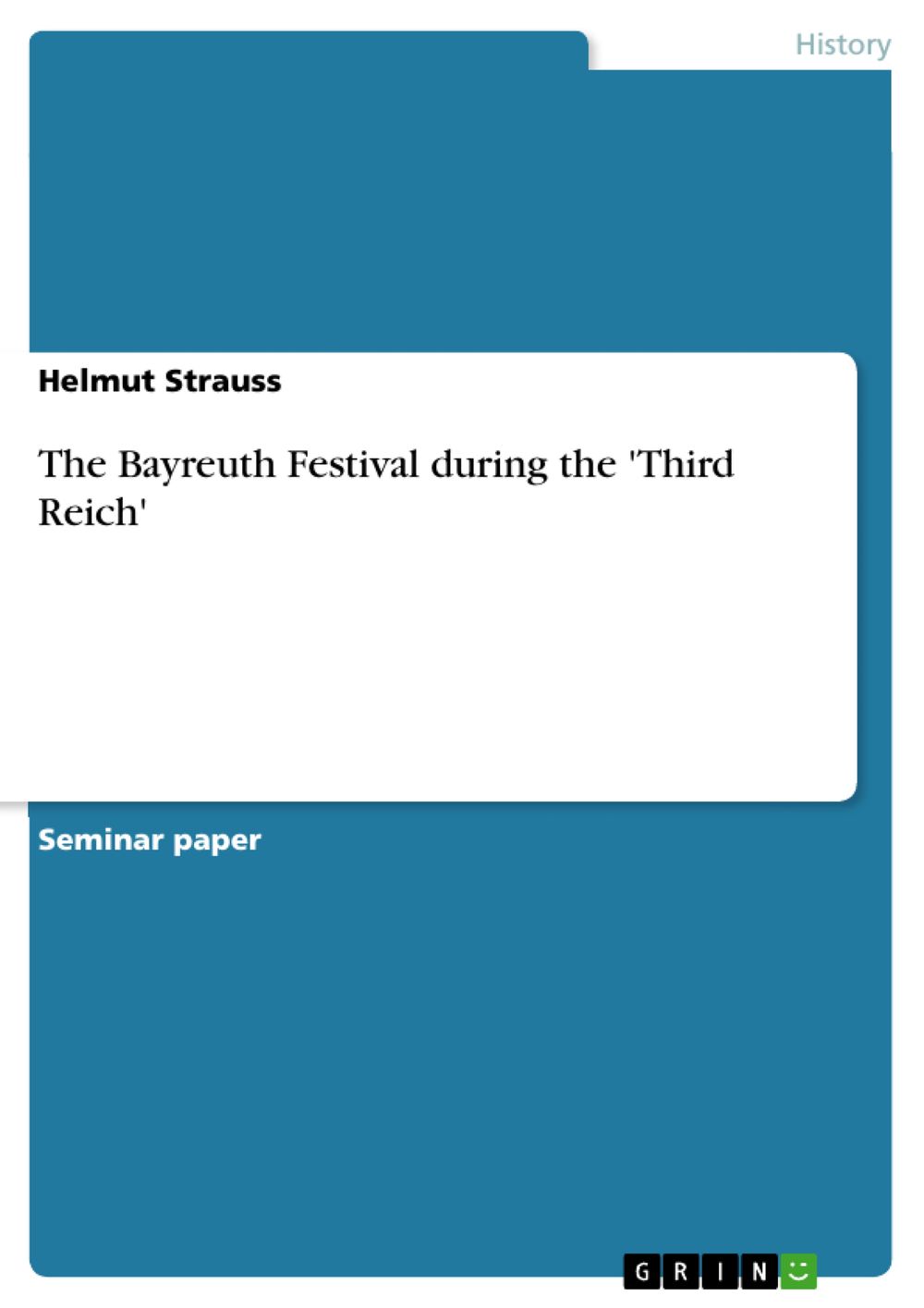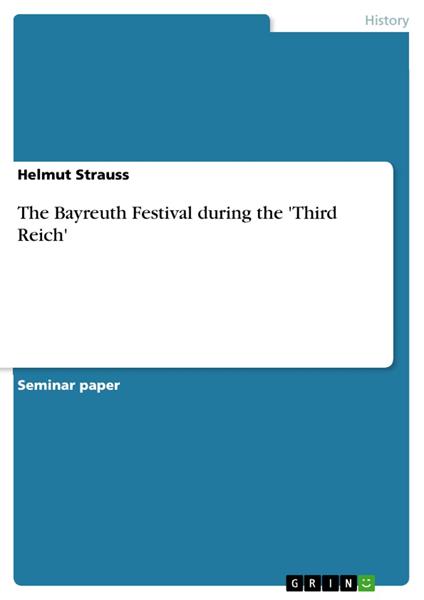The Bayreuth Festival during the 'Third Reich'
Seminar paper from the year 2004 in the subject History of Germany - National Socialism, World War II, grade: A (1,0), The New School (Historical Studies), course: Modern Dictatorship and Political Religion, language: English, abstract: [...] Since its founding in 1876, the Bayreuth Festival had been a locus of representation for politically prominent figures; among the guests of the first Festival were the German Emperor Wilhelm I and the Brazilian Emperor Dom Pedro II2. In the years to come, Bayreuth would keep its meaning as a “political symbol“ 3. From 1933 on, the Wagnerian Hitler used the Festival for both the representation of his person and his regime. The Foundations for this appropriation were both ideological and personal: Firstly, after Richard Wagner’s death, his “Bayreuth disciples” 4, grouped in the “Bayreuth Circle” 5 especially Hans von Wolzogen and Houston Stewart Chamberlain6, created the “Bayreuth idea” 7; in this process of formulating their ‘German Wagnerism’ as a völkisch ideology, they focused more on Wagner’s prose writings8, than on his music, and especially emphasized Wagner’s anti-Semitism9. 2 Eger, Manfred: Die Bayreuther Festspiele, in: Müller, Ulrich/Wapnewski, Peter (eds.): Richard-Wagner- Handbuch, Stuttgart 1986, p. 589-624, here: p. 596. 3 Schmidt, Michael: Bayreuth als politisches Symbol. 125 Jahre Richard-Wagner-Festspiele, in: Neue Gesellschaft. Frankfurter Hefte 48 (2001), p. 470-474. 4 Large, David Clay: Wagner’s Bayreuth Disciples, in: Large, David C. & Weber, William (eds.): Wagnerism in European Culture and Politics, Ithaka and London 1984, p. 72-133. 5 Schüler, Winfried: Der Bayreuther Kreis von seiner Entstehung bis zum Ausgang der Wilhelminischen Ära, Münster 1971. 6 The English-born racial theoretician Chamberlain had from 1888 on contact with Wagner‘s widow Cosima; in 1908, he married Eva Wagner, the daughter of Richard and Cosima and moved to Bayreuth; see Large, David Clay: Ein Spiegelbild des Meisters? Die Rassenlehre von Houston Stewart Chamberlain, in: Borchmeyer, Dieter/Maayani, Ami/Vill (eds.), Susanne: Richard Wagner und die Juden, Stuttgart &Weimar 2000., p. 140- 159. 7 Large, Disciples, op.cit., p.133. 8 Large, Disciples, op.cit., p. 133. 9 For a differentiated and instructive analysis of Wagner’s anti-Semitism see Katz, Jacob: The Darker Side og Genius. Richard Wagner’s Anti-Semitism. Hanover & London, 1986.
-
Autore:
-
Anno edizione:2004
-
Editore:
-
Formato:
-
Lingua:Inglese
Formato:
Gli eBook venduti da Feltrinelli.it sono in formato ePub e possono essere protetti da Adobe DRM. In caso di download di un file protetto da DRM si otterrà un file in formato .acs, (Adobe Content Server Message), che dovrà essere aperto tramite Adobe Digital Editions e autorizzato tramite un account Adobe, prima di poter essere letto su pc o trasferito su dispositivi compatibili.
Cloud:
Gli eBook venduti da Feltrinelli.it sono sincronizzati automaticamente su tutti i client di lettura Kobo successivamente all’acquisto. Grazie al Cloud Kobo i progressi di lettura, le note, le evidenziazioni vengono salvati e sincronizzati automaticamente su tutti i dispositivi e le APP di lettura Kobo utilizzati per la lettura.
Clicca qui per sapere come scaricare gli ebook utilizzando un pc con sistema operativo Windows



